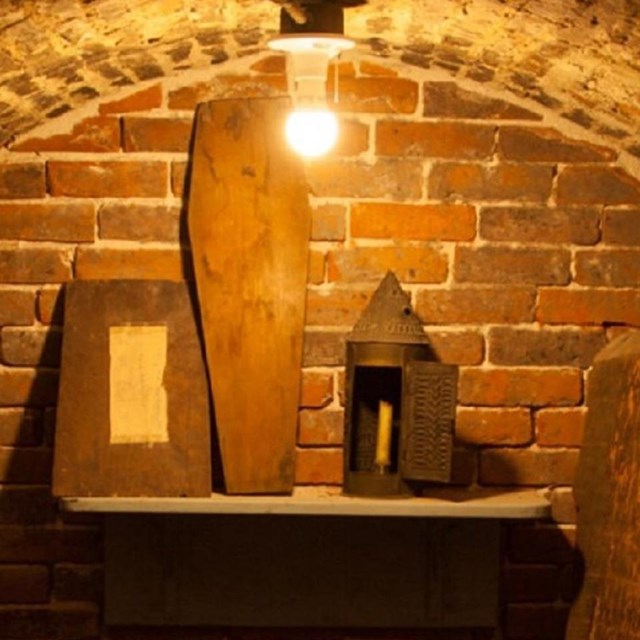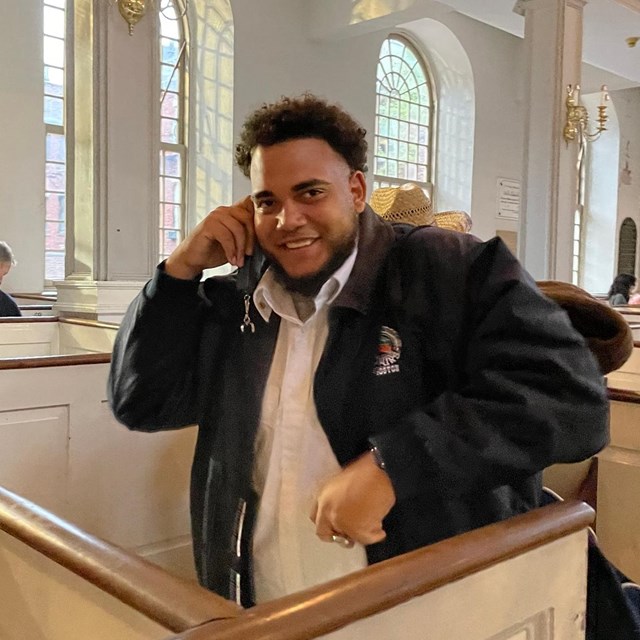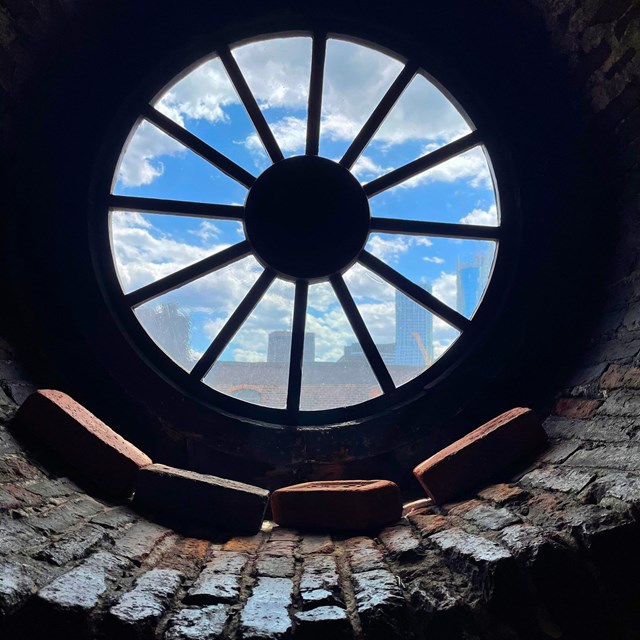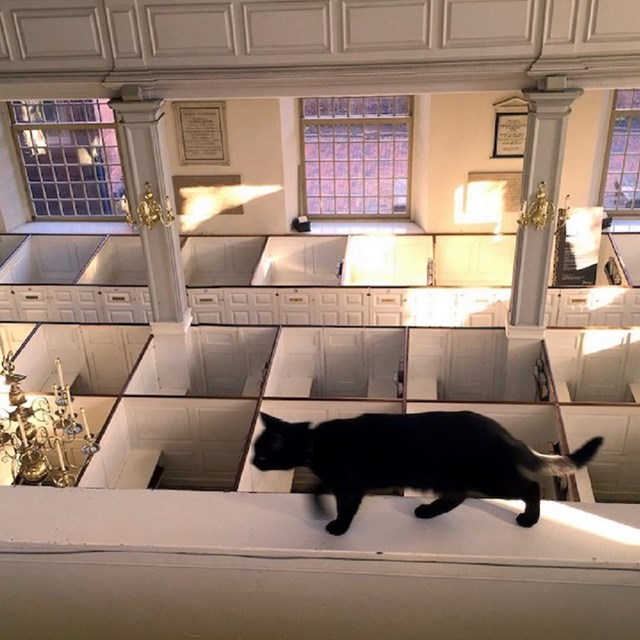|
Visit our keyboard shortcuts docs for details
Operated by Old North Illuminated, Old North Church became most remembered from its role in the early American Revolutionary War. Visitors can take tours of the church's balcony, crypt, and bell-ringing chamber. About Old North ChurchOn the evening of April 18, 1775, Robert Newman and John Pulling quietly entered Old North and carefully climbed to the top of the church's bell tower. They briefly hung two lanterns near the windows and made their escape. This signal, from the tallest structure in the town of Boston, served as an early warning that a detachment of the British Army was crossing the Charles River and heading west towards the towns of Lexington and Concord. By the end of the next night, the American Revolutionary War had begun. Explore the role this church played in Colonial Boston by visiting The Old North Church & Historic Site. Old North Church has been designated a "Site of Conscience" by the International Coalition of Sites of Conscience (ICSC). With over 350 members in 65 countries, the ICSC is the only global network helping historic sites, museums, and memory initiatives connect past struggles to today’s movements for human rights and social justice. For more information, please visit the International Coalition of Sites of Conscience website. Hours Today's Hours: Loading... Today's Hours: Loading...All operating hours Admissions Admission fee. Admission fee.
Accessibility Old North's sanctuary is accessible. Note: To avoid steps in the courtyard while following the Freedom Trail from downtown, you will have to make a left at Unity St., take the right on to Tileston St., then make a right on to Salem St. Old North's sanctuary is accessible. Note: To avoid steps in the courtyard while following the Freedom Trail from downtown, you will have to make a left at Unity St., take the right on to Tileston St., then make a right on to Salem St.Passport Stamp Passport to your National Parks stamp location. See all Boston locations. Passport to your National Parks stamp location. See all Boston locations.Contact InfoWebsite: https://www.oldnorth.com/ Address: 193 Salem St, Boston, MA 02113 Things to Do
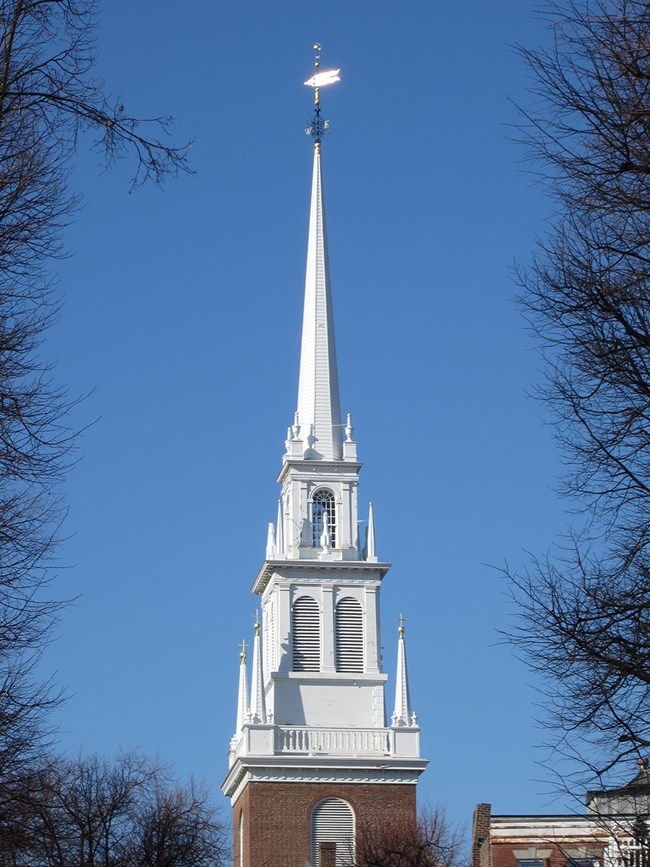
HistoryEstablished in 1723, the Old North Church stands as the oldest church building in Boston. Nestled in the historic North End neighborhood for over 300 years, this church and its community have borne witness to Boston’s history and evolving community. Old North is best known for the role it played in Paul Revere’s ride. On the evening of April 18, 1775, Robert Newman and John Pulling quietly entered Old North and carefully climbed to the top of the church's bell tower. They briefly hung two lanterns near the windows and made their escape. This signal, from the tallest structure in the town of Boston, served as an early warning that a detachment of the British Army was crossing the Charles River and heading west towards the towns of Lexington and Concord. By the end of the next night, the American Revolutionary War had begun. Old North Church, formally known as Christ Church in the City of Boston, was originally built for a Church of England congregation. To worship at Old North, members had to buy a box pew, named for their square shape. Once bought, the pew became their property in the church. Pew owners could decorate their pews and leave them to family members when they died. Being a pew owner also allowed one to vote on church issues. Visitors today can see and sit in Old North’s box pews. Only the most wealthy and elite in the community could afford box pews due to their expense. Those who could not afford a box pew had to sit in the balcony, known as the gallery. Those sitting in the gallery included servants, indentured servants, people of color, and children under the age of 12. Old North was an interracial but not integrated congregation. Black and Indigenous church members, both enslaved and free, were made to sit in the gallery on the North side of the building. The gallery tells an important story about inequality. In general, the gallery was considered less desirable. Originally, it would have consisted of plain benches. The view of the altar is obscured from many of the seats. The North Gallery is also bitterly cold in winter. The voices of Black and Indigenous congregants are missing from Old North’s archival materials; however, through records of baptisms, marriages, and burial services, as well as archival materials from other sources, we can start to piece together some of their stories. Learn more about the history and legacy of this historic church on Old North Church's website. MapPhotos |
|
|
Last updated: May 15, 2025

